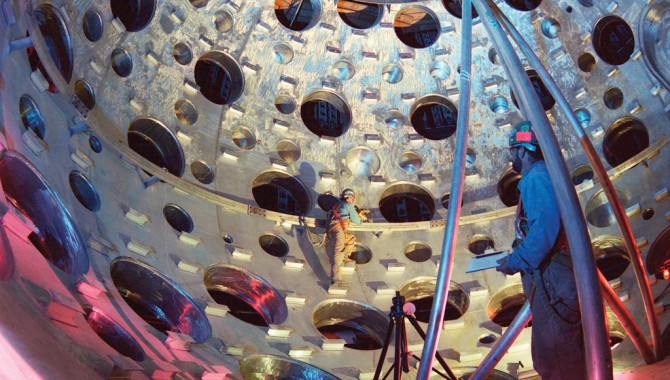
By Russel Rhodes The Centaur program, which developed a high-energy second-stage rocket in the early sixties, marked NASA’s first effort to use large quantities of liquid hydrogen.

By Russel Rhodes The Centaur program, which developed a high-energy second-stage rocket in the early sixties, marked NASA’s first effort to use large quantities of liquid hydrogen.

By Matthew Kohut The National Ignition Facility (NIF) is home of the world’s largest laser. With 192 laser beams that can deliver more than sixty times the energy of any previous laser system, NIF represents a significant step in enabling the study of high-energy density science. The design and construction of this unique, highly complex […]

By Jason Crusan, Marybeth Edeen, Kevin Grohs, and Darren Samplatsky What began as conversations between NASA and Hamilton Sundstrand managers grew into an idea to develop a piece of spaceflight hardware with minimal NASA oversight.

By Brent Buffington Cassini-Huygens, a joint mission between NASA, the European Space Agency, and the Italian Space Agency, has roamed the Saturnian system for the better part of six and a half years.

By Haley Stephenson To a rocket scientist, you are a problem. You are the most irritating piece of machinery he or she will ever have to deal with. You and your fluctuating metabolism, your puny memory, your frame that comes in a million different configurations. You are unpredictable. You’re inconsistent. You take weeks to […]

By Naoki Ogiwara In Europe and Japan, “Future Centers” feature spaces designed to enhance creative thinking.
NASA’s ASK Magazine gives program and project managers, engineers, and scientists a way to share expertise and lessons learned with fellow practitioners. This is only one way ASK helps share knowledge as part of NASA’s Academy of Program/Project and Engineering Leadership.

By Carol Anne Dunn, Carlos Calle, and Richard LaRoche To learn more about managing lunar dust, NASA and a simulation technology company pool their expertise. A major problem facing manned or unmanned missions to the moon is lunar dust.
By Katrina Pugh and Jo Ann Endo “Jamming” is an effective technique for sharing organizational knowledge. What do you do when you have valuable knowledge spread among multiple people in multiple organizations, and they don’t consider themselves experts?